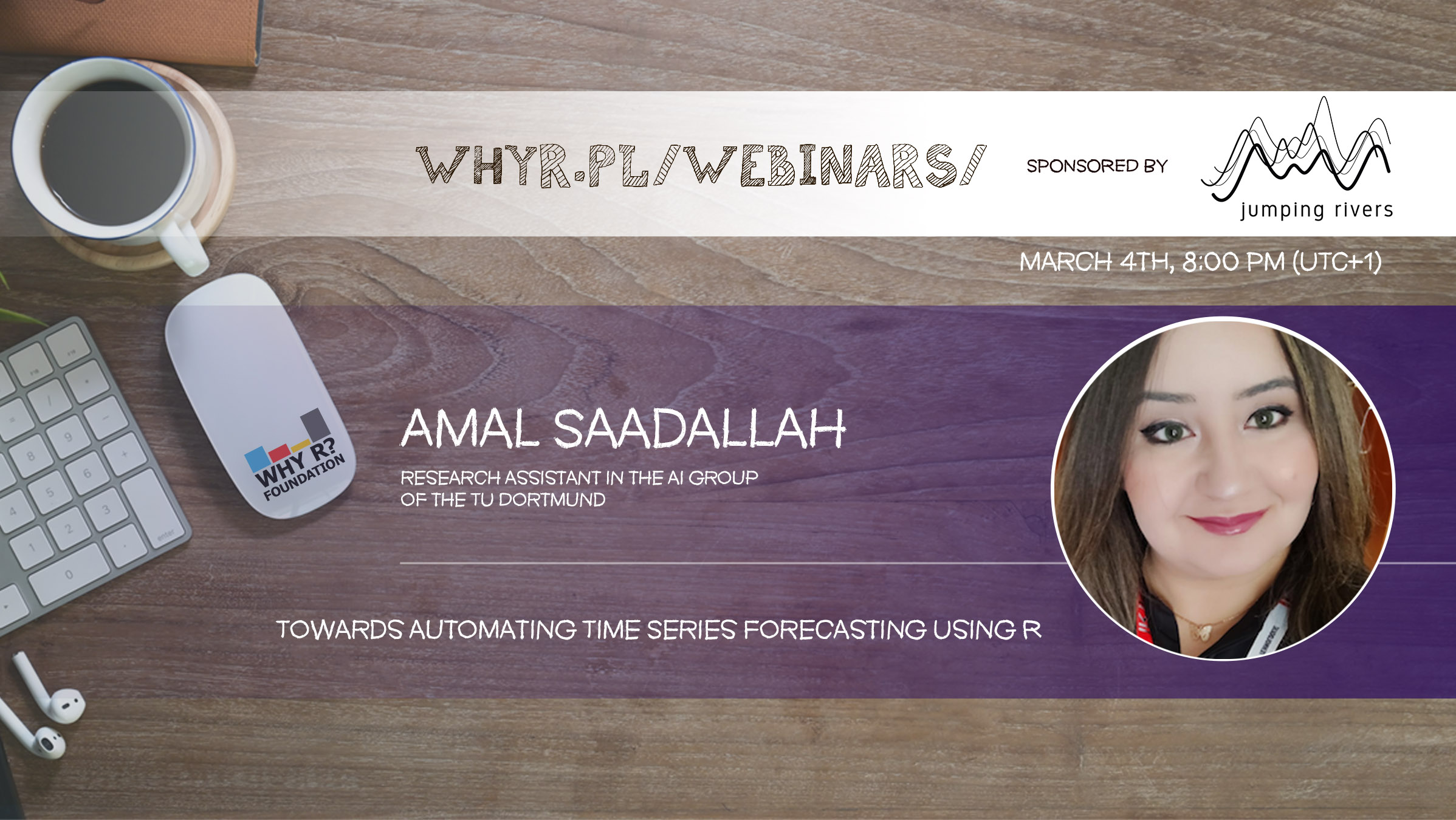
On Thursday, March 4th at 7 pm UTC | 8 pm CET, as part of the Why R? Webinar series, we have the honour to host Amal Saadallah, PhD student in Machine Learning and Specialist in time-series analysis and Ensemble Learning in the AI Group at TU Dortmund. She will talk about Automation of Time Series Forecasting Using R.
Join us!
Check out our other events on this webinars series. To watch previous episodes check out the WhyR YouTube channel and make sure to subscribe!
Looking for more R news? Subscribe to our newsletter, and stay updated on our events, and the most relevant news about our beloved open source programming language.
Finally, if you enjoy our content and would like support, donate to the WhyR foundation. We are a volunteer-run non-profit organisation and appreciate your contribution to continue to fulfil our mission.
- Amal Saadallah
She works as a research assistant in the Artificial Intelligence group of the TU Dortmund, within B3 subproject (Data Mining on Sensor Data of Automated Processes) of the Collaborative Research Center SFB 876 (Providing Information by Resource-Constrained Data Analysis). Her main research work is about adaptive ensemble methods for online learning, time-series analysis and forecasting and sensor-simulation data mining. She is also investigating industry 4.0 related applications, more specifically for machining processes. Hence, one of the major research directions in B3 is the combination of machine learning methods and process simulation systems for predictive maintenance and quality control of milling processes.
Towards automating Time Series Forecasting Using R
Both complex and dynamic evolving nature of timeseries data make forecasting among one of the most important and challenging tasks in this type of analysis. Typical methods for forecasting are designed to model time-evolving dependencies between data observations. However, it is generally accepted that none of them is universally valid for every application. Therefore, methods for learning heterogeneous ensembles by combining a diverse set of forecasts together appear as a promising solution to tackle this task. Ensemble construction is based on several steps including base models generation, pruning and aggregation. The goal of this talk is to present the most promising R packages/solutions for automating adaptive ensemble models construction for online time series forecasting by reducing the human intervention in the Machine Learning loop.
This event is part of a series sponsored by Jumping Rivers. For more information, check out the JR and WhyR partnership announcement.
